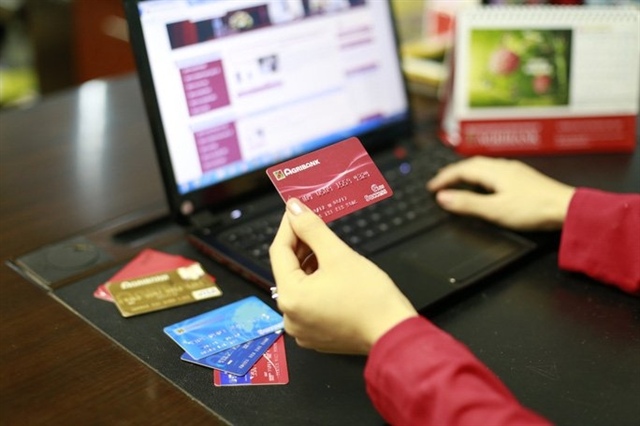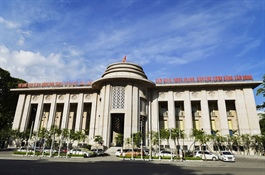Banking sector faces opportunities, challenges in 2022
Banking sector faces opportunities, challenges in 2022
The complicated developments of the Covid-19 pandemic make the 2022 global economic outlook and inflation unpredictable, posing challenges for the banking sector.

The central bank will implement solutions to control the size of credit in a flexible manner |
Identifying challenges
Dao Minh Tu, standing deputy governor of the State Bank of Vietnam (SBV), said that in 2021, the SBV operated monetary policy tools to regulate liquidity, ensuring stability for the money market and readiness to support economic recovery. Interbank interest rates were maintained at a low level, facilitating reductions in lending interest rates. SBV efforts contributed to controlling inflation below the ceiling target of four percent set out by the National Assembly and the government.
Under the direction of the SBV, credit grew by an estimated 12.97 percent in 2021, higher than the 8.44 percent recorded by the end of 2020. Four out of five priority areas saw higher growth rates than the overall credit growth.
Tu said the spread of the Omicron variant has caused difficulty in forecasting the 2022 global economic outlook and inflation, challenging the Vietnamese banking sector. He also pointed out challenges in monetary policy management, such as inflationary risks, growing bad debts, imbalance in capital sources due to credit expansion and support policies, and application of digital transformation.
Expected 14 percent credit growth
In 2022, the SBV will continue managing monetary policy in a proactive and flexible manner, and in close coordination with fiscal and other macro-economic policies to curb inflation, maintain macro-economic stability, and fuel economic growth. Vietnam’s credit growth in 2022 is expected to increase to around 14 percent, Tu said, adding that appropriate solutions will be implemented to stabilize the foreign exchange and the gold markets.
The central bank will implement solutions to control the size of credit in a flexible manner, targeting trade and production activities and priority areas in line with government policy. In addition, the SBV will continue to deploy measures to overcome difficulties for businesses and individuals affected by the pandemic and natural disasters, while effectively implementing the restructuring of credit institutions for bad debt settlement during the 2021-2025 period. Accordingly, the SBV will focus on handling weak credit institutions, improving administration and financial capacity, increasing transparency and compliance with international practices, and enhancing competitiveness.
The central bank will also boost control and settlement of bad debts, minimize new bad debts, prevent cross-ownership among credit institutions, strengthen inspection and supervision of banking activities, especially in areas with high potential risks, and maintain the bad debt ratio below three percent.
| Deputy Prime Minister Le Minh Khai said the most important task of the banking sector in 2022 is to manage monetary policy in a proactive, flexible and effective manner, and in close coordination with fiscal and other macro-economic policies to curb inflation, maintain macro-economic stability, and fuel economic growth. |




















